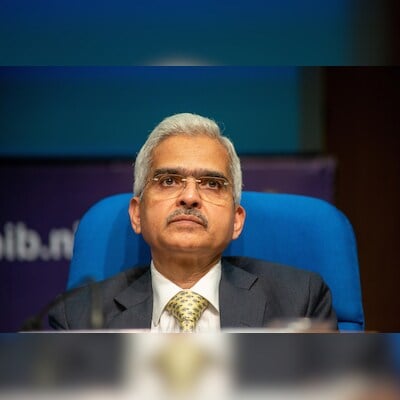India’s interest rate will depend on the future trajectory of inflation, said Shaktikanta Das, governor of the Reserve Bank of India (RBI). He said that the focus will be on the month-on-month momentum—whether inflation is building up or moderating. The upcoming inflation trajectory will be carefully monitored with a forward-looking approach, and decisions will be made based on that assessment.
“It is not a question that in the current context, like in July, the inflation came to about 3.6 per cent, that is the revised number, and August has come at 3.7 per cent. So, it is not so much how the inflation is now; we have to look at, for the next six months, for the next one year, what is the outlook on inflation. So, therefore, I would like to sort of step back and look more carefully at what is the future trajectory of inflation and growth, and based on that, we will take a decision,” said Das in an interview with CNBC while answering a question on when the central bank can start cutting rates.
After increasing the repo rate by 250 basis points between May 2022 and February 2023, the six-member monetary policy has maintained the status quo on both rate and stance.
On the possibility of a rate cut in the next policy review scheduled for October 7-9, the governor said that there is a new Monetary Policy Committee (MPC) set to be constituted, as the tenure of the current external members has come to an end after four years. Consequently, three new external members will be inducted into the MPC. Decisions will be made after discussions within the committee.
Das said that India’s gross domestic product (GDP) growth momentum remains robust across all segments, with the exception of a temporary slowdown in government expenditure, both at the central and state levels, likely due to the recent election season. Going forward, it is expected that budgeted amounts will be spent, allowing the government to catch up on its expenditure.
The RBI is confident that India will achieve 7.2 per cent growth this year, with a long-term potential growth rate of 7.5 per cent to 8 per cent, which is considered sustainable. While a growth rate of over 10 per cent would require further analysis, the current trajectory indicates that India’s growth story will remain strong in the years ahead, with sufficient job creation at the projected growth rates, he said.
Das further said that providing forward guidance on interest rates can be risky due to its implications in both directions. In an uncertain and rapidly changing global environment, unforeseen events can disrupt expectations. Geopolitical and climate-related developments are happening with unprecedented speed and unpredictability.
He said that with such high uncertainty, diverging monetary policies and growth scenarios across countries further complicate the picture. Offering forward guidance in this context could mislead markets. If circumstances change unexpectedly, authorities may find themselves unable to uphold the guidance, potentially leading markets in the wrong direction without yielding any positive outcomes. As a result, forward guidance on matters like rate hikes—such as when and by how much—are not typically provided.
“It can be very risky because it applies both ways. So, if you give forward guidance, sometimes given the uncertainty that surrounds us in the world, and today it is a fast-changing world,” he said.
“Climate-related developments, weather-related developments are also coming with the kind of suddenness which we have not seen before. So, there is so much uncertainty and the monetary policy between the countries is now also diverging. Growth scenarios are also diverging. So, there is so much uncertainty around us. If you give a forward guidance, you will be sort of leading the market in one direction and if something happens the other way, something goes wrong and you will not be able to keep up with your forward guidance. You would have unnecessarily misled without any outcome,” he added.
On the RBI’s active intervention in the foreign exchange market, governor Das said that the RBI’s stated objective is to minimise excessive volatility in the rupee as such volatility does not benefit the economy. He said that India’s macroeconomic and financial fundamentals are significantly stronger than in previous years, which naturally strengthens the rupee without any artificial intervention.
He further said that although some may expect the rupee to depreciate further, these expectations do not account for the fact that India’s economic position has improved.
Additionally, India is attracting substantial foreign exchange inflows, particularly after its inclusion in global bond indices, making it an attractive and secure investment destination.
“When the financial sector fundamentals are so strong, naturally the rupee will gain strength, which is the function of the market. We are not artificially keeping it strong. People probably expect the rupee should depreciate more. But the point is, you are not looking at the fact that the Indian economy has become much stronger today. The second thing is, today India is attracting a lot of foreign inflows, especially after the bond index, inclusion of India in the bond indices and India turning out to be a very sound and safe investment destination,” he said.
He also said that there are no significant risks or concerns in the non-banking finance sector, as financial indicators such as capital adequacy and gross non-performing assets (GNPA) remain stable.
First Published: Sep 16 2024 | 6:57 PM IST
